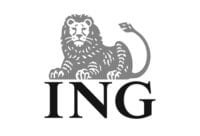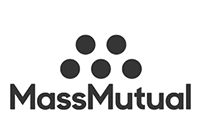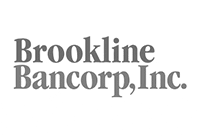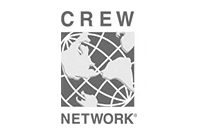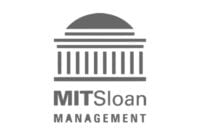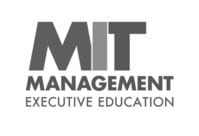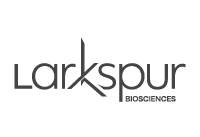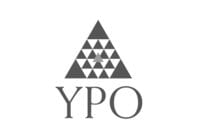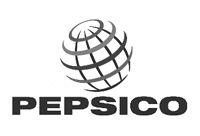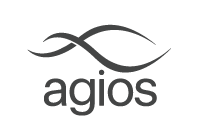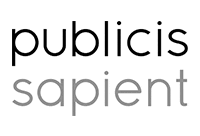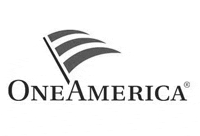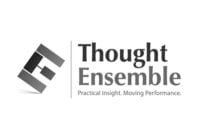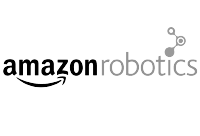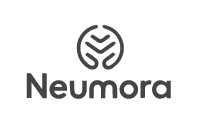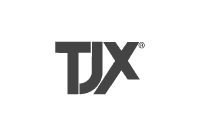How we
Make an impression
Rediscover your Mojo!
The Challenge
A couple of years ago I was asked by a good friend to help one of the members of his immediate team. This person was new and had a lot of talent, but was somehow unable to show up with confidence with his management colleagues. He and his team played a crucial support role for the others, but there was something missing. Could I help?
The Man Inside of the Man
I met with the young man and was immediately surprised by his 6’3″ height and strong build. I asked him to explain what he was experiencing in these meetings. He expressed how he felt intimidated by the others. He was new to the corporate world and they seemed to have much more experience than he did. As he spoke, I saw that his posture began to collapse and his head droop. He looked defeated.
I then asked him to tell me a time when he felt in his best self. A time when he felt most confident, alive, and effective. He paused a moment in reflection, and then slowly his face began to light up. Come to find out he was, at one time, an international martial arts champion! What! My curiosity was lit! I immediately asked him to sit as though he was at a match. His posture immediately changed. He sat back with a swagger that would send chills in any opponent. I asked him about this person and what had happened to him. He said he got hurt and had to put this part of his life behind him, and move into a new life.
The Path Forward
Together was talked about how it felt to be back in his former self. He liked it and missed it very much. We then discussed and practiced ways for him to recapture the essence of this part of himself and to bring it with him in his new role of business.
Integration
It did not take long for him to see results. He knew the value of practice and quickly saw the results among his peers. He projected a new found sense of confidence that was tempered with the humility of a champion. His value and that of his team was soon felt. He had finally landed in his role and stepped into a new chapter of his life.
From a potential lawsuit to a $6,000,000 check!
A compelling example of the direct impact that classroom learning can have on top line revenue generation.
It is August 2016. For the past 18 months we had been leading a large-scale digital transformation project for an energy distribution company.
Over the prior 6 months issues had surfaced such as missed milestones originating from both our side and the client side. With each delay the two teams sat down and renegotiated new milestones and begun anew. Our new launch date was now September. One month away.
We received a new notice, ‘No way we can launch in September!’ The frustration had been mounting on both sides. We got by with 3 delays, but it was getting tense. Both parties were deeply entrenched in a negative cycle of blame, pointing fingers at each other for the delays.
We took a collective deep breath and proposed a November date. We felt confident that this would give both sides enough time to work through any issues and still hit this new target launch date.
We received yet another more frightening notice. This time it was from the client finance team. They demanded that we take November off the table! They were facing their year-end close and said it would be too much for them to handle at the same time. They counter proposed a March launch date.
We were at a stalemate! There was no way we could wait until March! That was over six months away and it would put us way over budget. Plus, our credibility was on the line. Our whole team was fuming and I was thinking that if we did not resolve our differences quickly, we could be looking at a substantial lawsuit that would create chaos for both of us. I was feeling anxious beyond measure. The stakes were very high and we needed to resolve this, and fast.
Meeting the Challenge
It was at this exact time I was enrolled in a class being delivered by Protagonist Consulting Group. On the first day of the program we were led through several experiential exercises designed to help us increase our influence with key stakeholders. These included how to be fully present and listen more deeply to the needs and concerns of others. One of my favorites was the use of a simple yet powerful self-regulation practice for getting into the present moment. It used the words Breathe – Connect – Land. It was as simple as it sounded. Take a deep breath in, connect with what is most important, then breathe out and land the intention inside of yourself. I would soon learn how important these tools would be in a subsequent call with my client.
In the afternoon of day one we were working on a model for open communication and dealing with conflict. It has four steps, Observe – Think – Feel – Want[RS1] (O-T-F-W). The essence of the model is that people fall into the trap of blame and judgment when they are unable to disentangle their own experiences of conflict. A person needs to clearly reflect on the observable facts of their experience first, then on what they were thinking at that time, then on the actual feelings that resulted from those thoughts, and finally on what it was they wanted or needed in that moment. The critical piece of the process is to avoid projecting blame on the other person that comes out in statements like, I feel neglected, or I feel betrayed. These false emotions are judgments on someone else’s behavior, not feelings at all. The facilitator explained the four aspects of the model and, as a way to demonstrate, asked if there was someone who had a high-stakes, unresolved situation with a client.
The issues with my client had reached a boiling point so I willingly volunteered. I started by giving some context. Many in the room knew the situation. I outlined the recent interactions between the two working groups and mentioned the phone call I had scheduled first thing the following morning.
Surfacing the Paradox
As we proceeded to move through the model I started to project blame onto our client counterparts through the guise of feelings. I said that I felt deceived by what the client had been saying and then doing. I was immediately reminded to stick to what I was actually feeling and not assign blame on the other party. I then experienced something remarkable. I experienced two opposing emotions about the unresolved situation. On one side, I was excited to see the light at the end of the tunnel on this project. On the other, I was concerned and discouraged that the two teams were at odds with each other with no obvious way forward.
I was then asked to repeat the process taking the point of view of our client. This proved to be an eye-opening process. By taking the time to consider what my client had observed, and what she might have been thinking, feeling and wanting, I was able to get out of my own myopic position on the situation. I was able to build true empathy for her situation.
It was by taking both points of view that I realized the root of the problem. We were operating from a fixed pricing structure. On our side, we were frustrated and blaming the client team for trying to squeeze out the most fixes and features from us and keeping us from our anticipated launch dates. First and foremost, we needed to get the framework up and running. The client, in turn, was blaming us for cutting corners and not bringing the most value to them. The teams were not aligned, mistrust was mounting and we were losing our footing quickly.
I realized that the path forward hinged on communicating this paradox to my client. I left the session feeling confident in my approach for the call the next morning.
The Way Forward
That evening I began writing my thoughts out on paper. I was now better able to put myself in the shoes of my counterpart. I realized that, due to the fixed pricing structure we were operating under, she had lost authority with her team. There was no incentive for her team to distinguish between the “nice to have” and “have to have” fixes and features. They no longer responded to her appeals and felt no sense of urgency to move forward. In addition, the steering committee was fast losing confidence in her ability to lead this project. In order to regain standing in the eyes of the committee, as well as regain influence with her team, she needed the right incentives in place that the fixed pricing did not provide.
This was the strategy that I was able to carry with me on my call with her. My goal was to frame a plan that would return authority to her. But first I knew I needed to build a relational bridge between us. I needed to be fully present on the phone with her and project a calm presence. Once on the call, the O-T-F-W model gave me a clear way to communicate our position to her without falling into the cycle of blame. I listened deeply in our conversation to see if she was experiencing the same paradox as me. She was, and was able to see that the path to the finish line lay in changing the structure under which her team was operating. By the end of our call, we were able to get on the same page with the same incentives and sense of urgency. The next step was for us to sit down with all of the key people and begin moving forward together. As it turned out, from her perspective, getting to the finish line was worth the outstanding Six million dollars that was owed to us. She initiated the payment immediately.
Sweet Victory
I arrived at the session on day two and found the group already digging into a new exercise. Everyone turned and looked at me anxious to hear what happened on my call with the client. I was grinning from ear to ear. The key point I relayed to the group was that the model gave me a clear pathway to express my thoughts. I was able to acknowledge the miscommunication that had taken place over the last several months and expressed the impact that it was having on both of our teams. I was able to say this without blame. I was also able to say to my client the following. “All that we want is to move toward a successful launch, on time and on budget. I imagine that this is what you want as well?” She agreed. I then said, “I also imagine that you would like to be treated fairly in the process.” She perked up in agreement. I then said, “This is also what we are looking for.” For the first time in many months we were on the same side of the table agreeing on a positive way forward.
In essence, we were able to get beyond the cycle of blame and align on three key areas: The first was the shared outcome to achieve a successful launch on time and on budget. The second was to align on our values, we both wanted to be treated fairly. Finally, was to change the commercial incentive structure. It was a win-win.
Return on Investment
Continual learning is a must for any organization struggling to achieve its strategic goals. It is with confidence that I can say that without the external support, we might have found ourselves entrenched in a protracted lawsuit. I don’t know about you, but I much prefer the $6,000,000.00 check received from a happy and satisfied customer.
Reflections: Moments that Matter
A couple of months after working with Arshad in my program, I was able to speak with him about how things had progressed with his client. He happily reported that he and his client continued to work collaboratively and launched the platform. It was the most successful launch ever. He also noted that several moments of truth had occurred that made a significant difference. One in particular was during an in-person meeting with the client when she took a moment to apologize to him for the way her team had been acting. He expressed how much her words meant and, in turn, acknowledged his team’s contribution to the problem. This was a powerful moment of connection between the two of them. She also told him that once the new commercial structure was in place, she had let her group know that the negative behavior had to stop, and that the steering committee was very impressed by her ability to move the project to a successful completion. He said that her whole presence and demeanor had changed. She stood taller, her voice was stronger and she was much more relaxed inside of herself. It was not only a digital but a personal transformation as well.
Critical Communication Skills
The best businesses who lead full scale transformation projects realize that the true nature of their work goes beyond their technical competence. Success comes from their ability to build and sustain quality relationships and resolve a multitude of interpersonal issues and conflicts with their clients that invariably crop up. These issues tend to take the form of differences in expectations, lack of communication, and a cycle of blame between parties. The deep seeded mistrust between the two teams in this case study was rooted in the misalignment of the pricing structure. It created different incentives for each team. It was not until authority was restored to the client, and the teams were aligned, that the process could move forward.
Arshad took away several key learnings:
Perspective: Continual learning is a mindset. We are all entrenched in our day-to-day activities and executing a multitude of tasks. It is critical step back, reflect and see these interactions from all sides.
Skills: None of us know all the answers. Even the best in any field need to find time to learn and grow. The time that we took to work on self-regulation, presence and communication skills were critical elements in achieving collaboration with his client and her team.
Practice: Having the opportunity to try on the new behaviors in a safe learning environment was crucial. Colleagues can provide feedback and insights that are immediately useful. Being able to learn from and with each other makes a huge difference in daily performance in front of clients.
